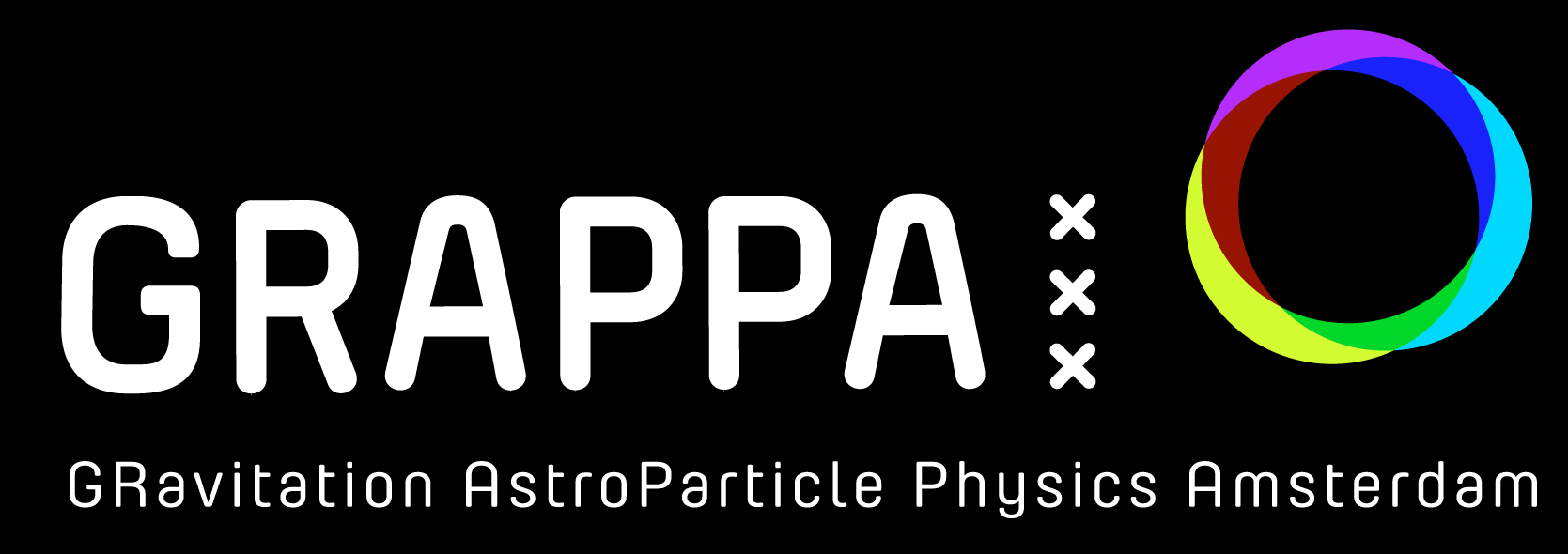Below you find description of prospective bachelor projects. Feel free to contact me, if you have some other ideas/wishes that would fit my research expertise. Jacco Vink
Content:Applying astrophysics of tenuous plasmas applied to laboratory settings used for chip lithography
Supernova remnants consists of a shell of hot plasma, 106 - 108 Kelvin. These X-ray emitting plasmas have interesting physical processes: the density is so low (1 atom cm-3) and the time scale so short (few hundred to few thousands years) that the number of atom-electrons collisions is very limited. As a result the gas may not be in ionisation equilibrium (low ionisation given despite the high temperature) and the gas may not be in thermal equilibrium: electrons and ions have different temperatures, or perhaps even have a non-thermal distribution. The parameter that governs these processes is n_e t (electron density times age).
For this project we are going to explore the same physics, but in the context of a laboratorium setting, which is used to explore the chip lithography physics by for example ASML. In order to create EUV light lasers vaporise tin droplets creating a tin plasma, which shines in EUV. In this case the plasma is much denser (1019 atoms cm-3) but the time scales much shorter. So a question is whether the tin plasma is out of equilibrium as well. For this project we are going to use the tools of X-ray spectroscopy of supernova remnants and apply them to tin plasma's.
We do this in collaboration with Oscar Versolato and John Sheil from the ARCNL lab. ARCNL is a public-private partnership established by the Dutch Research Council (NWO), the University of Amsterdam (UvA), the Vrije Universiteit (VU) and semiconductor equipment manufacturer ASML. The work has some some data analysis and theoretical aspects.
The X-ray signatures of dust destruction in supernova remnants
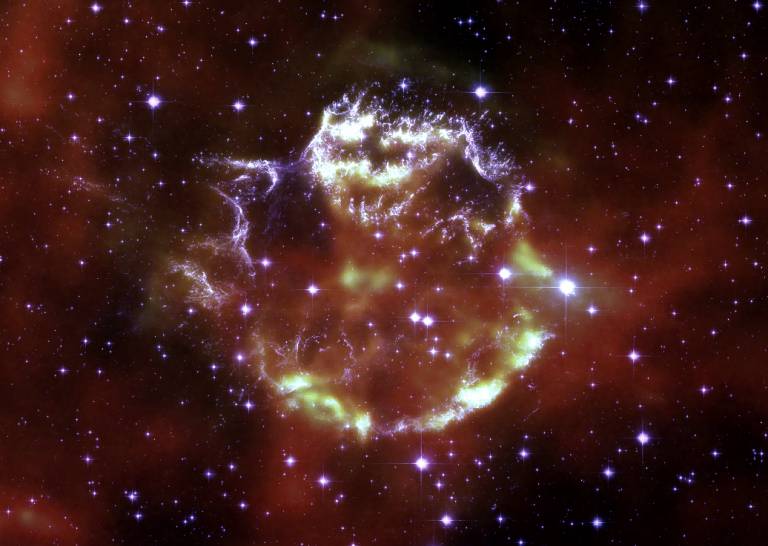 The supernova remnant Cas A contains a lot of silicate dust grains. According to some most silicon
can even be locked up in grains. However, in the hot plasma this dust is being destroyed due to collisions with ions and electrons. This should leave an X-ray spectral signature that we should be able to detect with the upcoming X-ray satellite mission XRISM. The reason is that the destruction leads to continuous injection of weakly ionised silicon atoms, which radiate a different spectral energy than the silicon injected from the start.
The supernova remnant Cas A contains a lot of silicate dust grains. According to some most silicon
can even be locked up in grains. However, in the hot plasma this dust is being destroyed due to collisions with ions and electrons. This should leave an X-ray spectral signature that we should be able to detect with the upcoming X-ray satellite mission XRISM. The reason is that the destruction leads to continuous injection of weakly ionised silicon atoms, which radiate a different spectral energy than the silicon injected from the start.
In this project we are going to model this effect. We estimate the silicon injection rates, and calculate the distribution of n_e t (see previous described project) for silicon, compared to elements not in grains. And then we simulate what the X-ray spectrum at high spectral resolution (for XRISM) will look like.
Principal component analysis of X-ray data from supernova remnants
Principal component analysis (PCA) is a statistical tool to describe the variations in a data set. For this project you use PCA on X-ray images made with very specific energies, in order to characterise the spectral variation. We then use the PCA to identify important spectral components and will extract spectra from regions in the supernova remnant where a certain PC is very prominent.
The supernova remnants considered are Kepler's SNR, Cas A, Tycho's SNR, MSH 11-54. This project will be co-supervised by postdoc Amael Ellien.
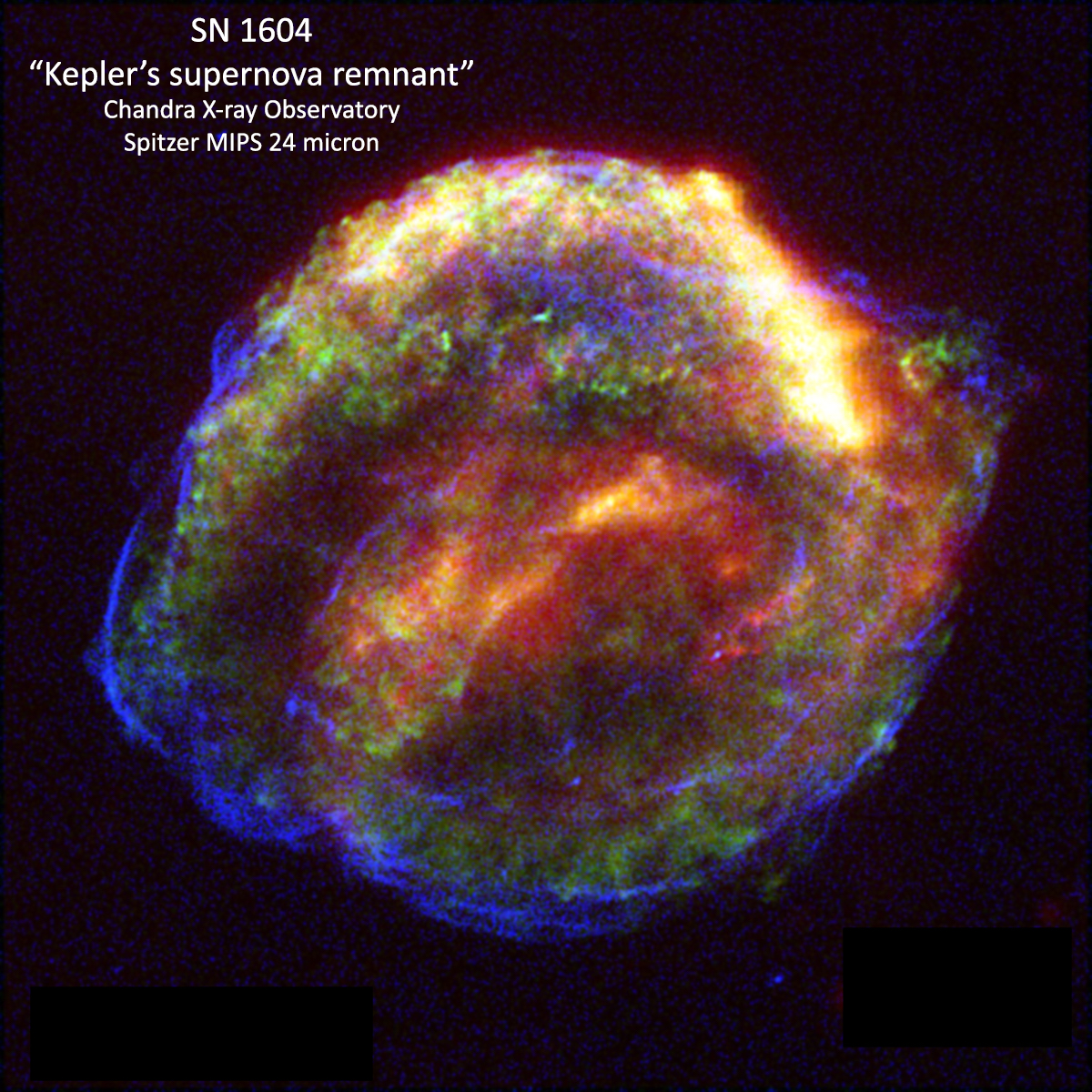
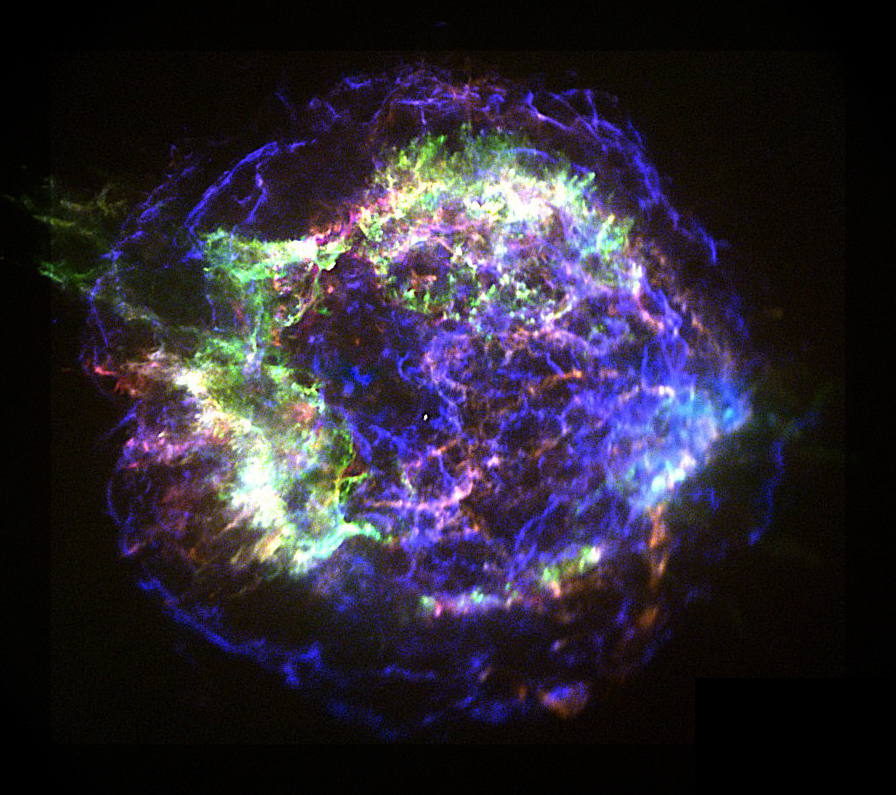
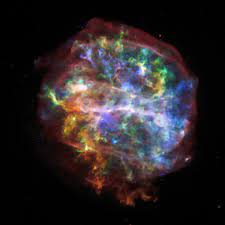
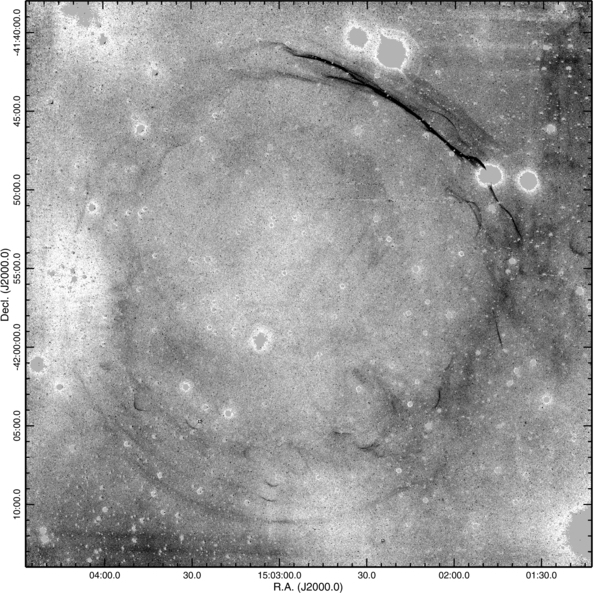
The Hα morphology of the shocks of SN1006
SN1006 is a large supernova remnant (SNR) and one of best studied when it comes to study shocks and shock acceleration in SNRs. In 2009 E. Helder/J. Vink obtained optical spectroscopic data to study the Hα emission from two shock regions. The data were never published, as the spectra were to noisy for the scientific goals. But the accomponying optical data showed that the Halpha emission had a broader spatial profile than expected. This could be related to the low density around SN1006. (The image shows a complete mosaic by Winkler et al. 2014)
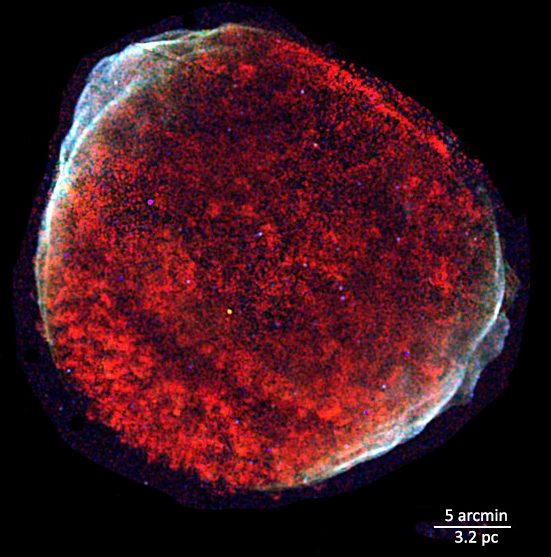
For this study the spatial profiles will be measured and analysed, and then interpreted in the context of the theory of neutral charge exchange reactions. Chiefly, 1) can we use this to measure the density near the shock? 2) what does it tell us about how neutral the pre-shock gas is?
The data can also be combined with X-ray observations by Chandra or XMM-Newton (see lower image).
